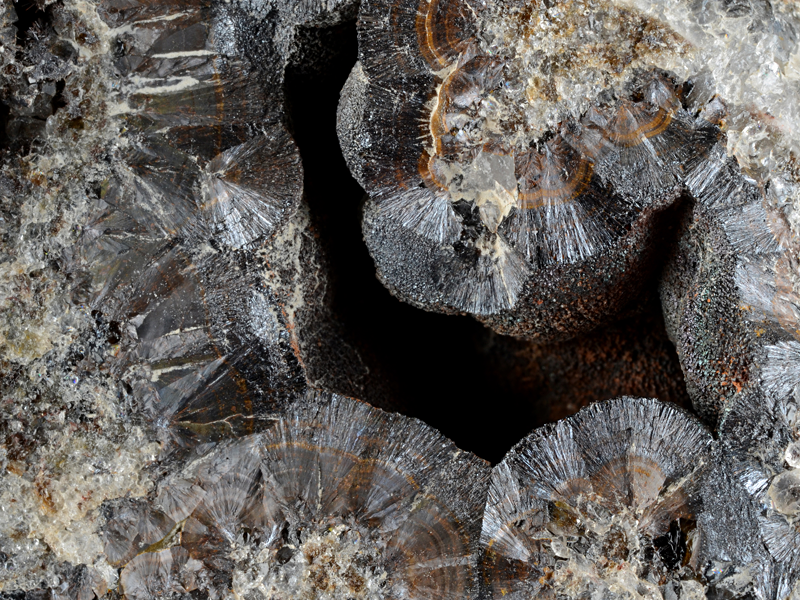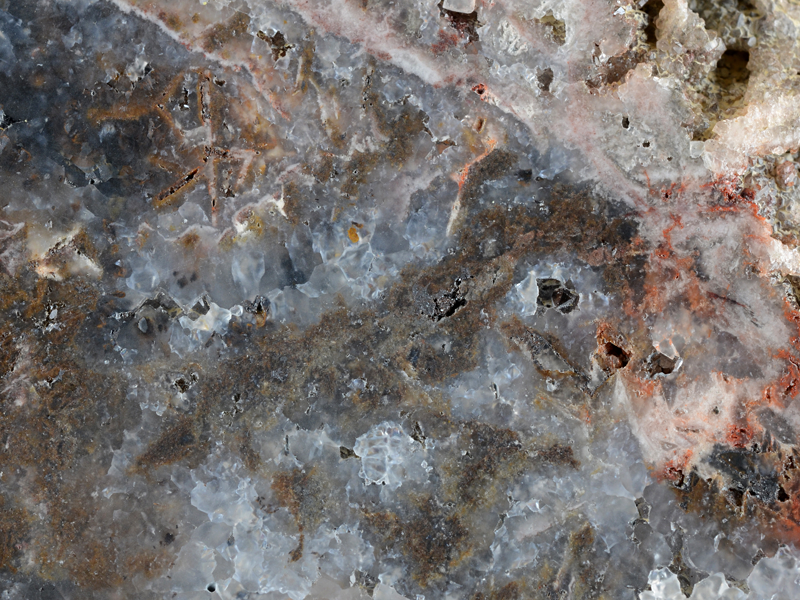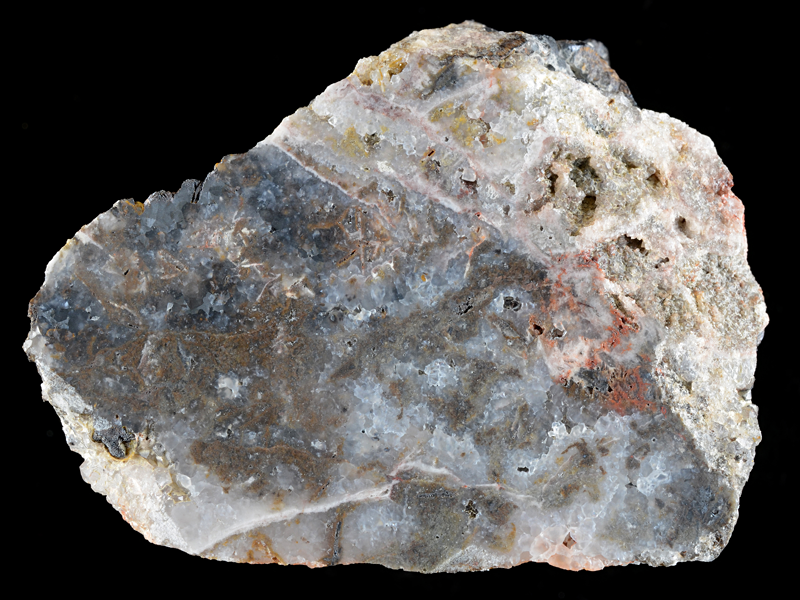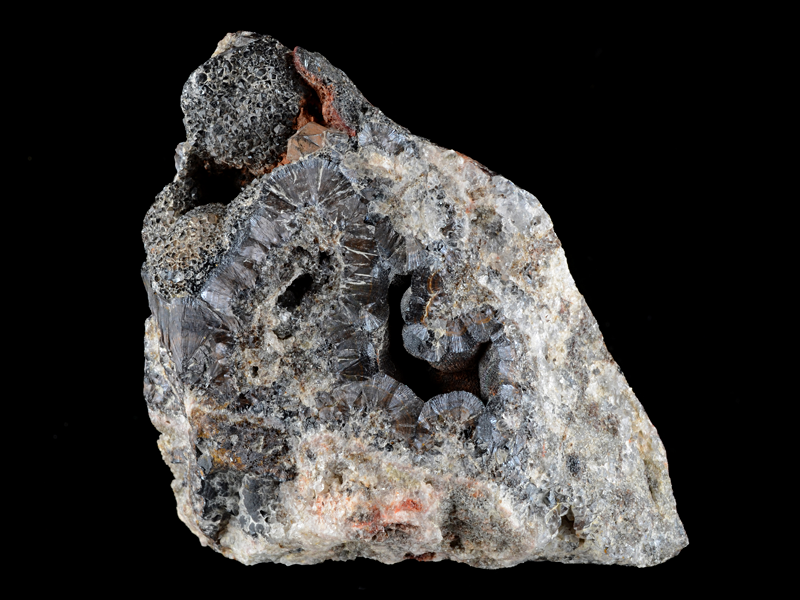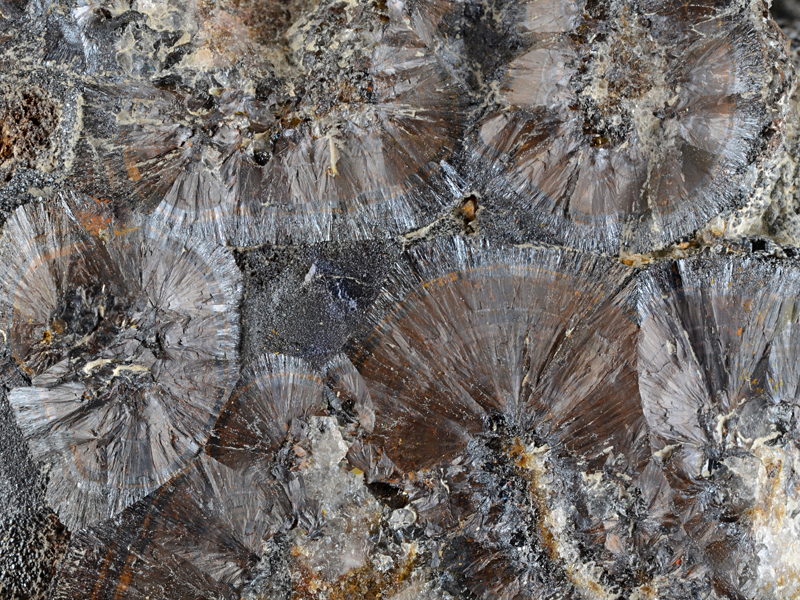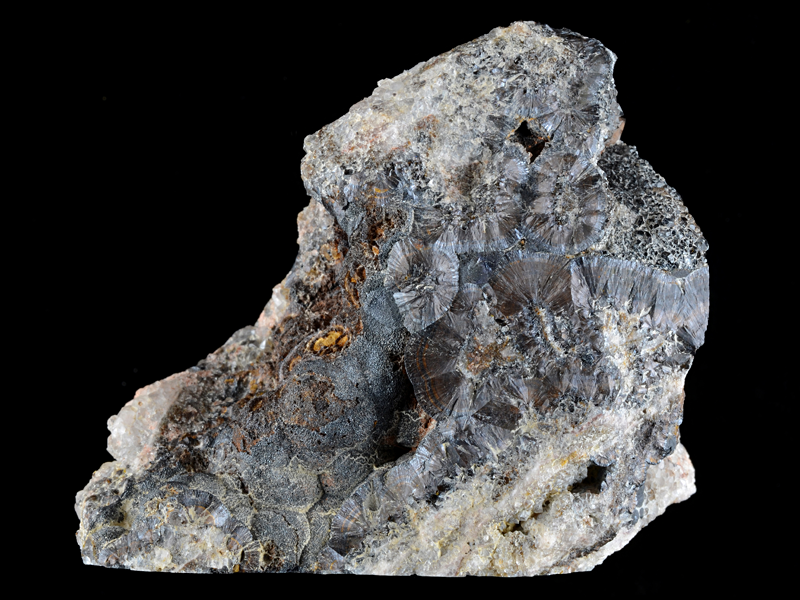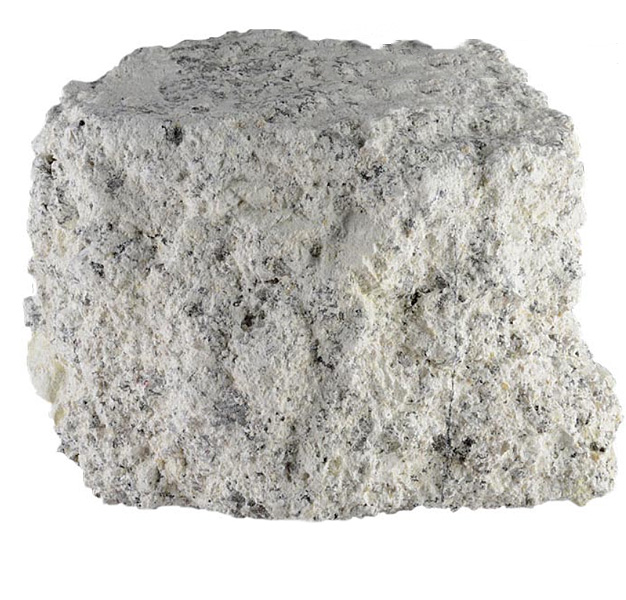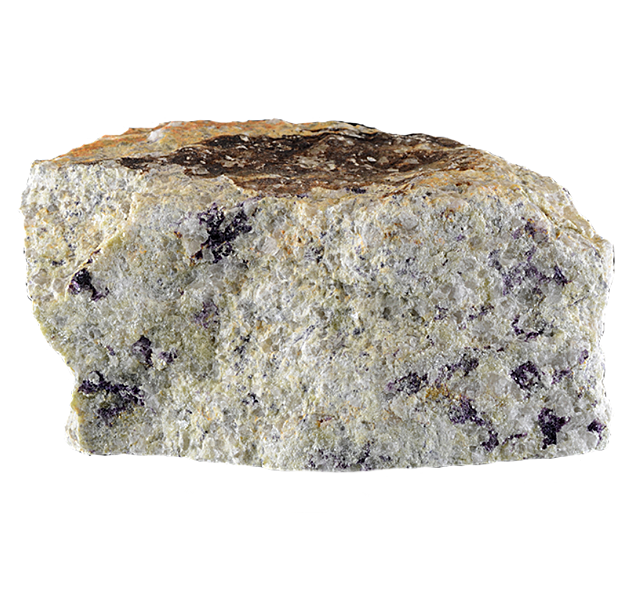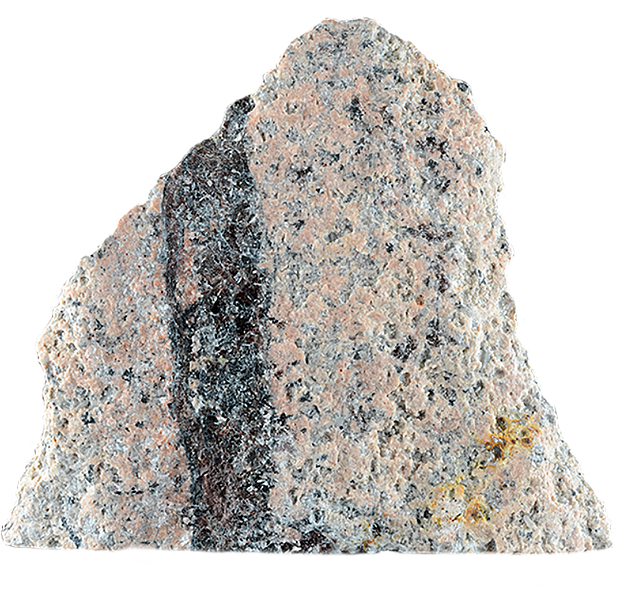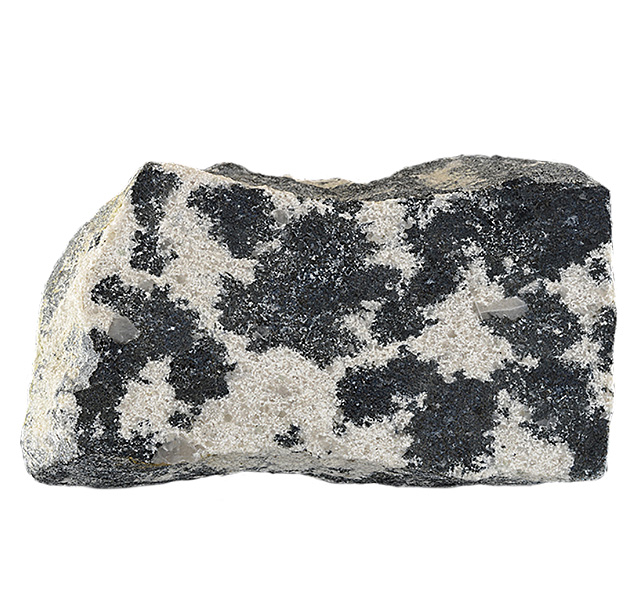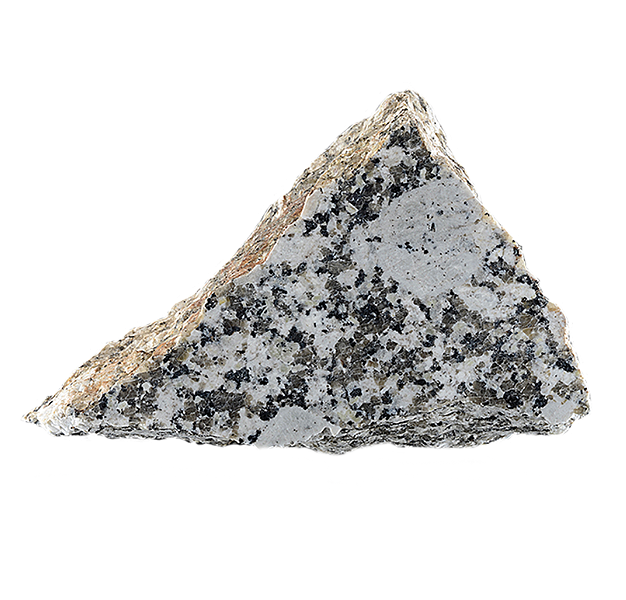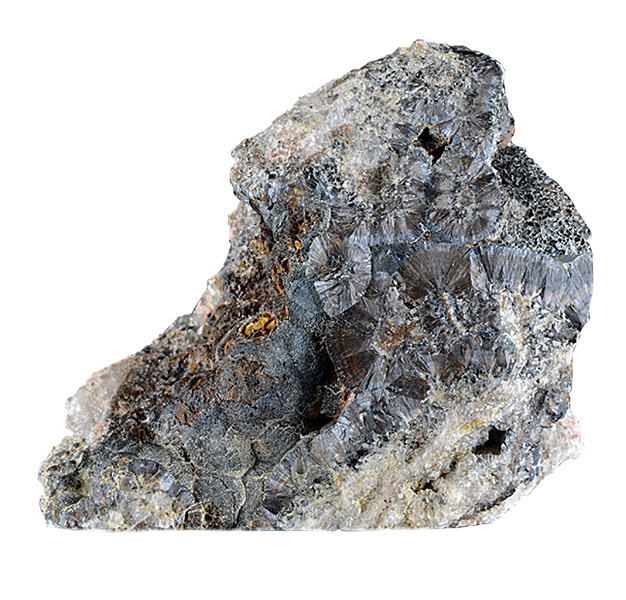
Fact sheet
Forming botryoidal growths (kidney-ore) this sample could easily be mistaken as iron ore, not least because it is from Restormel Royal mine which operated as an iron mine from at least 1797 until final closure in 1910. Between 1855 and 1883, 127,796 tons of iron ore were produced. However, as well as iron, the mine is also known for its manganese, bismuth, barium and uranium mineralisation.
Analysis has shown that the rich, dark brown ore in this sample is an intimate mixture of cryptomelane (a KMn oxide) and romanechite (a BaMn oxide). It's impossible to tell them apart optically.
Iron-manganese mineralisation occurs at low temperatures and marks the end of hydrothermal activity in the St Austell area.
See also Cotterell, T.F. (2010) An unusual manganese-bearing assemblage from Restormel, Lostwithiel, Cornwall. Journal of the Russell Society, 13, 53-56.
A case study of the St Austell granite complex in Cornwall, England, illustrating the range of rocks associated with a granite intrusion. The earliest part of the complex is a siderophyllite (biotite) granite containing muscovite and tourmaline typical of a SW England granite, with many primary magmatic features.
This early intrusion was followed by the intrusion of an evolved volatile-rich magma which was the driving force behind a series of intense hydrothermal processes as volatiles escaped from this magma and helped to establish an extensive alteration halo (aureole). Boron, fluorine and lithium (as well as water) played major roles in the formation of the second intrusion and in the associated hydrothermal processes. Igneous activity lasted around 18 million years from 282 Ma (siderophyllite granite) to 265 Ma (fluorite granite).
